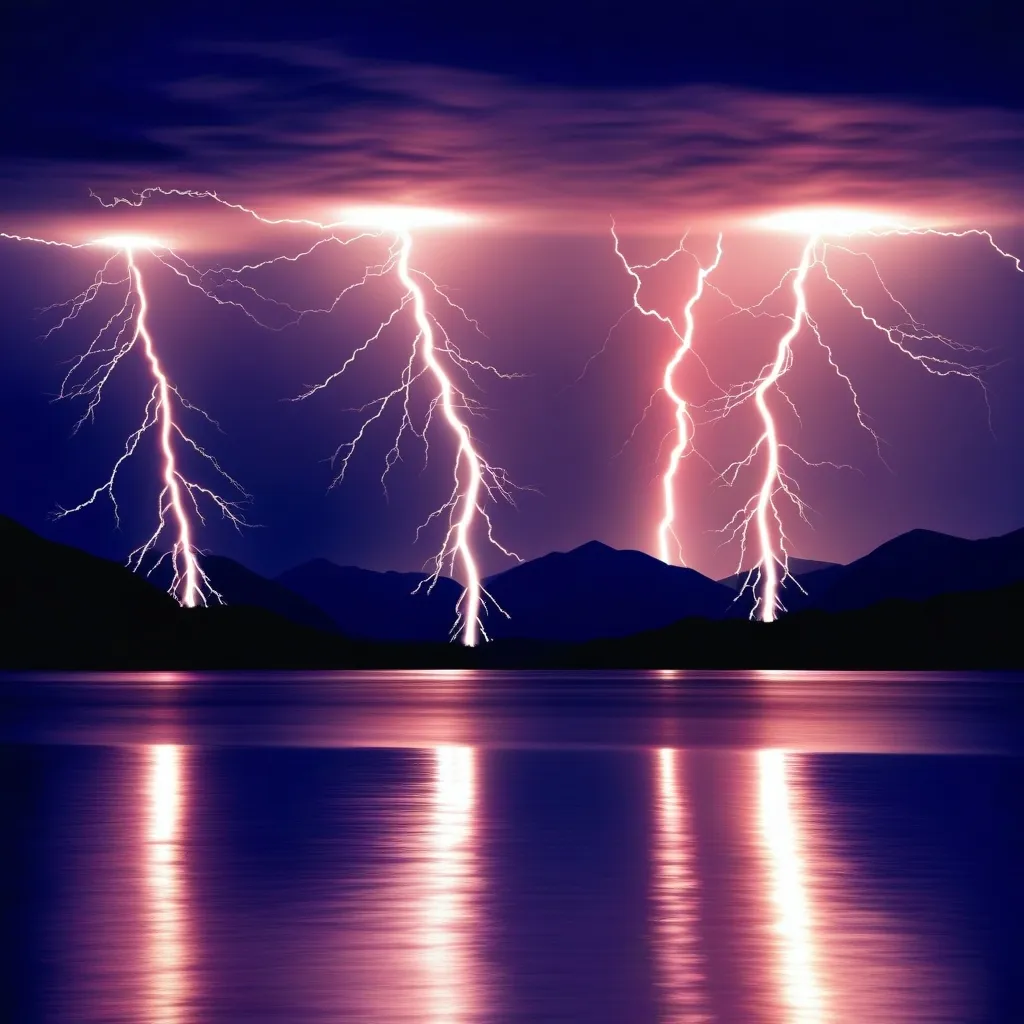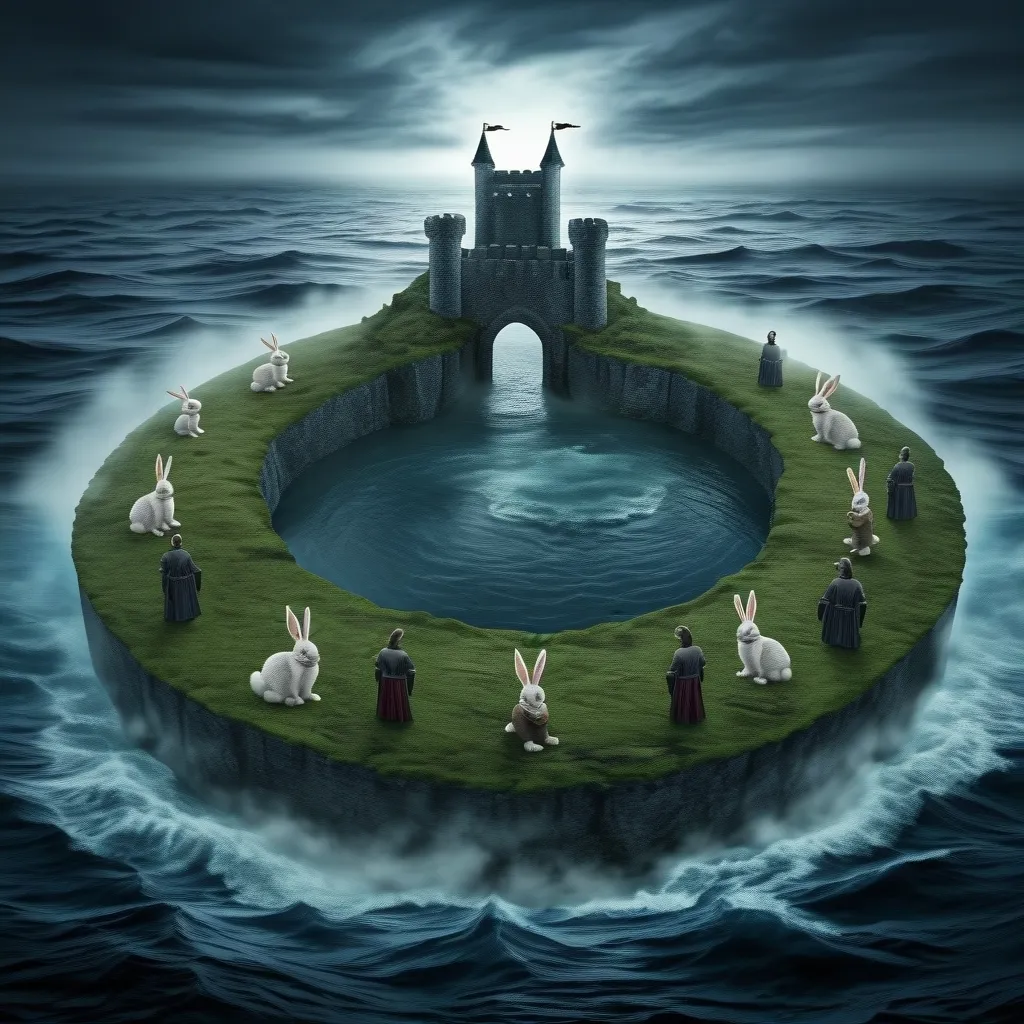The Eternal Storm: Unveiling the Mysteries of Catatumbo Lightning
Imagine a place where the sky never truly darkens, where lightning strikes illuminate the night with an otherworldly glow. This isn’t a scene from a sci-fi movie, but a real phenomenon that occurs in the heart of Venezuela. Welcome to the realm of Catatumbo Lightning, nature’s own light show that has captivated humans for centuries.
Nestled where the Catatumbo River meets Lake Maracaibo, this spectacular display of nature’s power has earned nicknames like the “Everlasting Storm” and the “Beacon of Maracaibo.” But what makes this lightning so special? Why does it occur here and nowhere else on Earth with such intensity?
Let’s dive into the heart of this electrifying mystery.
Picture yourself standing on the shores of Lake Maracaibo. As the sun dips below the horizon, the air buzzes with anticipation. Suddenly, the sky erupts in a dazzling display of light. Flashes illuminate the clouds, transforming night into day for brief, breathtaking moments. This is Catatumbo Lightning in all its glory.
What makes this spot so unique? It’s all about location, location, location. The Lake Maracaibo basin is like a natural amphitheater, surrounded by towering mountain ranges. The Andes, Perijá Mountains, and Mérida’s Cordillera create a perfect storm of conditions. These mountains trap warm Caribbean winds, forcing them upwards and setting the stage for nature’s electrifying performance.
But the show doesn’t start until the sun goes down. As darkness falls, easterly winds pick up speed, forming what scientists call a nocturnal low-level jet. This invisible river of air carries moisture from the Caribbean Sea and Lake Maracaibo towards the southern basin. Here, it collides with cool air cascading down from the Andes. The result? A rapid upward rush of air that births massive storm clouds.
And boy, do these storms pack a punch! We’re talking lightning strikes up to 28 times per minute, lasting for hours on end. It’s so reliable that sailors once used it as a natural lighthouse, guiding their ships safely to port.
Now, you might think lightning is lightning, right? Not quite. Catatumbo Lightning holds the Guinness World Record for the highest concentration of lightning on the planet. We’re talking over 1.2 million bolts each year in this tiny area. That’s about 250 flashes per square kilometer – a light show that puts even the most extravagant fireworks display to shame.
But like any good performance, the Catatumbo Lightning has its peak seasons. September and October are when the sky really comes alive, with lightning activity reaching its zenith. The dry season, particularly January and February, offers a bit of a breather. But don’t worry, the show never truly stops.
Living under such an intense electrical storm might seem terrifying, but for locals, it’s just part of life. The Bari people, who’ve called this region home for generations, have a special name for the phenomenon: the “House of Thunder.” They’ve woven the lightning into their myths and legends, seeing it as a tribute from fireflies to their gods.
But it’s not just folklore that makes Catatumbo Lightning special. This natural wonder plays a crucial role in our planet’s ecosystem. The intense electrical activity generates ozone, making it one of the world’s greatest ozone producers. It also helps distribute nutrients in the local environment, shaping the unique ecosystem of the region.
Scientists have made great strides in understanding and predicting this phenomenon. By studying the Lake Maracaibo Low-Level Jet and its dance with climate patterns, they can now forecast lightning activity months in advance. This knowledge is crucial for keeping people safe and managing activities in the area.
For storm chasers and nature enthusiasts, witnessing Catatumbo Lightning is the holy grail of experiences. Imagine standing under a sky alive with electricity, the air charged with energy. The constant flashes create a surreal atmosphere, turning night into a pulsing, living thing. It’s an experience that leaves even the most seasoned travelers in awe.
The Venezuelan government recognizes the value of this natural wonder. There’s talk of nominating Catatumbo Lightning for UNESCO World Heritage status. This would not only highlight its scientific importance but could also boost local tourism, bringing economic benefits to the region.
But beyond the science and the potential for tourism, there’s something deeply moving about Catatumbo Lightning. It reminds us of the raw power and beauty of our planet. In a world where we often feel disconnected from nature, phenomena like this bring us back to our roots, reminding us of the awe-inspiring forces that shape our world.
For those lucky enough to witness it, Catatumbo Lightning is more than just a light show. It’s a humbling experience that stays with you long after the last flash fades. Locals often speak of nights so bright it feels like day, the fear of the storms quickly overshadowed by their mesmerizing beauty.
As we continue to explore and understand our planet, places like the Catatumbo region serve as reminders of the mysteries that still exist in our world. They challenge us to look deeper, to question, and to marvel at the intricate dance of elements that create such spectacular displays.
In the end, Catatumbo Lightning is more than just a meteorological oddity. It’s a testament to the complex and beautiful world we live in. It’s a reminder that sometimes, the most extraordinary things happen in the most unexpected places. And it’s an invitation to all of us to step outside, look up, and remember the wonders that surround us every day.
So next time you’re planning a trip, why not consider chasing the eternal storm? Who knows, you might just find yourself standing under the most electrifying sky on Earth, witnessing a spectacle that has captivated humans for centuries. After all, some experiences are worth traveling to the ends of the Earth for – and Catatumbo Lightning is definitely one of them.






